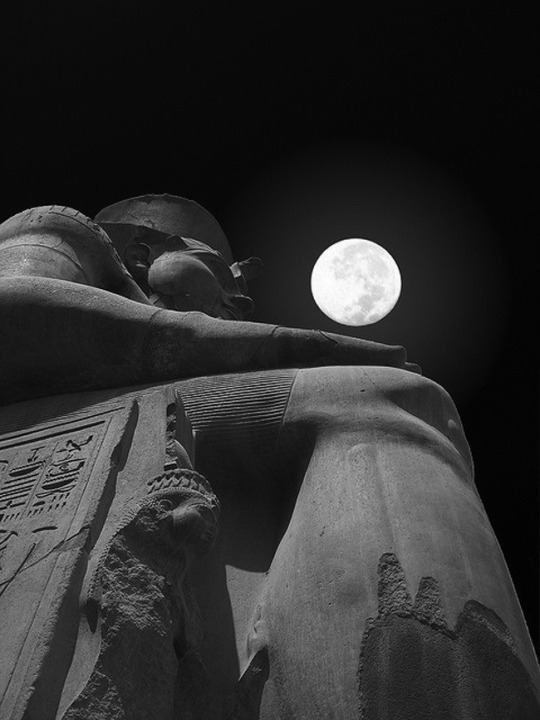She/Her, Gnostic-ish Ancient Near East Syncretic Polytheist, with a focus on crossover between Canaanite/Phoenician, Egyptian, Minoan, and Punic cultures
Don't wanna be here? Send us removal request.
Text
“I come, blood on blood, like the sea, wave on wave.
I have a soul the color of poppies.”
— Miguel Hernández, “Bloody Fate,” Selected Poems
455 notes
·
View notes
Text
Ra
The ocean gave birth,
from chaos he came.
Became a sun god,
a creator was made.
Traveled with the eye,
around the earth,
into the dark, to pry.
Order and kings, the falcon,
who rose into the sky.
64 notes
·
View notes
Photo
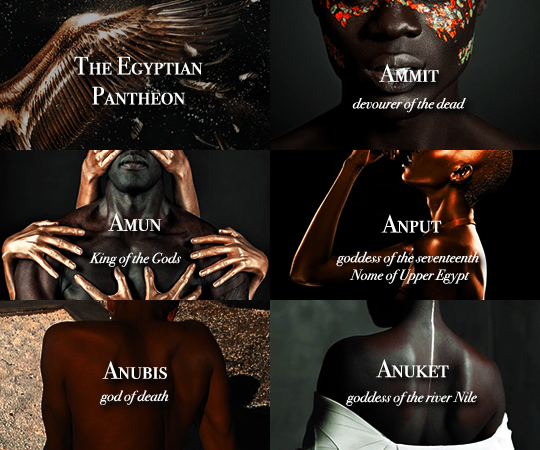




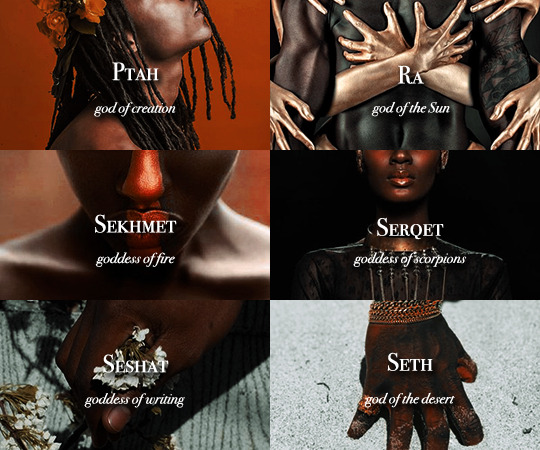
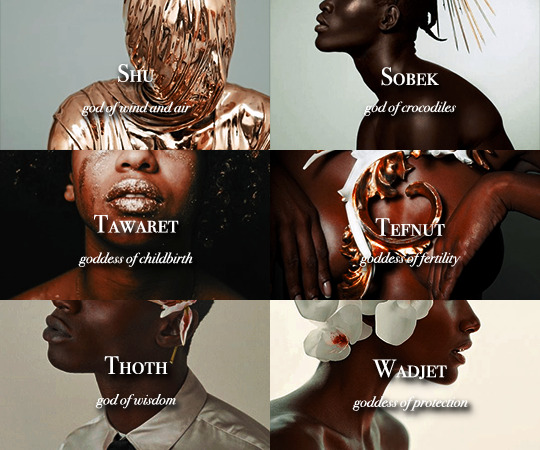
Pantheon Aesthetics
Greek - Egyptian - Roman - Norse
54K notes
·
View notes
Note
So in the Sekhmet myth she gets insanely drunk and the other gods change her into a more benign and less murdery form. I’ve seen people saying that form was Hathor and others saying it was Bastet. Is this a regional variance thing or did the myth change? Personally I think it makes more sense for it to be Bastet because lion to cat makes more sense than lion to cow goddess.
There are two things you have to remember when you’re dealing with Egyptian mythological traditions.
1. Dynastic Egyptian history spans roughly 3,000 years. Things change during such a long time - old gods fall out of favour, existing gods merge, and new ones sometimes emerge. With that, the traditions change as well. However,
2. The Egyptians themselves weren’t overly concerned with things “lining up” perfectly, anyway. There were at least four different creation traditions that were based on locality, and at least two of these existed concurrently. They were unbothered by this because they didn’t consider their traditions to be direct representations of A Thing That Definitely Happened Exactly Like This in the foggy past. They are, like any image of the gods they create, an impression seen through the eyes of mortals, because mortals can’t see the gods as they truly are until they’ve passed through death.
The Book of the Heavenly Cow, which is the work that contains the story of The Destruction of Mankind, is a perfect example of this. Whether it was Hathor or Bastet turning into Sekhmet seems to have been a matter of personal taste. The copies we have date from two subsequent dynasties, namely from the tombs of Tutankhamun, Seti I, Ramses II, Ramses III and Ramses VI, so there’s not a lot of temporality or locality that comes into play here.
The reason why it doesn’t really matter whether it’s Hathor or Bastet, is because both Hathor and Bastet (as well as Sekhmet, and also Mut and Wadjet, but the latter two aren’t pertinent to the discussion of The Destruction) were also considered the Eye of Re.
The Eye of Re is the feminine counterpart of Re, and an extension of his power. Often, she’s a vengeful and destructive force (which could be applied as pure destruction, or as a protective destruction). In The Destruction of Mankind, she’s 100% murder-rampage-out-of-control-destructive, and that’s what the problem is and why Sekhmet has to be pacified. Sekhmet’s out of control destructiveness doesn’t mean that either Hathor or Bastet were soft uwu goddesses, by the way. As the Eye of Re, they did encompass that destructive aspect in their own right. And Bastet especially has always been a fierce goddess, anyway, her vibe compared to the heat of the sun.
So since either version of the myth was considered valid by the ancient Egyptians and both co-existed, you can just take whichever version you read as a perfectly sensible iteration of the story. I should note that whether or not an aspect from these traditions makes sense to you, or any non-Egyptian, really doesn’t factor into it because it’s about whether it made sense to the Egyptians. That both Hathor and Bastet were said to be Sekhmet’s pacified form is perfectly fitting for the ancient Egyptian worldview.
415 notes
·
View notes
Text
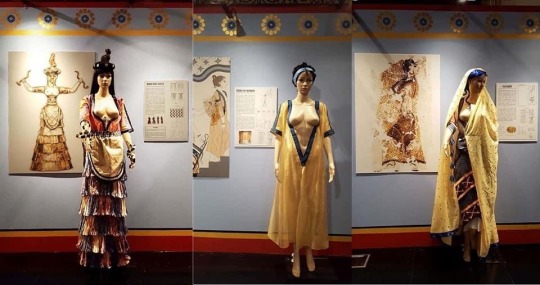
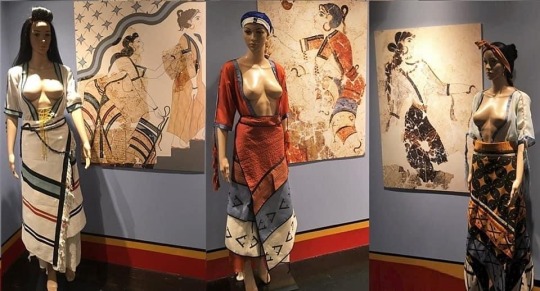
Reconstruction of the clothes of women from the Minoan era in Crete (reconstructions made by Dr. Bernice Jones).
The clothes of Minoan women were surprising with their style and variety of patterns. Greek women of later times wore clothes with completely different stylistic solutions. The exposed breasts were a characteristic feature of the dress of Minoan and Mycenaean women. They attached great importance to their attire, wear and used jewelry. They wore a wide and long skirt with a decorative belt tightening the waist and a tight-fitting bra with a metal frame revealing the breasts. They put on coats or capes on cooler days. Hair, intricately combed, was decorated with brown or gold ribbons, beads or headbands. Others wore appropriate headgear. They wore unusual hats. Some were wide, while others were tall, almost completely covering their hair, decorated with feathers or ribbons.
It can be seen at the Hellenistic Museum in Melbourne, Australia. The reconstructions are based on frescoes.
Photos: Tahney Fosdike.
22K notes
·
View notes
Photo




When you die, Anubis does a vibe check on you and if you fail, Ammut - Hungry Hungry Hippo of the Damned, eats your soul
333 notes
·
View notes
Text

Nuit - JeszikaLeVye
257 notes
·
View notes
Text
Time lapse of a thunderstorm captured from an airliner from 12,000m (40,000ft) over the Pacific Ocean shows a towering cumulus convection that rises from an altocumulus cloud cover.

An altocumulus cloud cover from below.
22K notes
·
View notes
Text

Justice - Ma’at
Pinterest
369 notes
·
View notes
Text
Who works with whom: the Netjeru and tumblr kemetics
I compiled this list from recent big kemetics-of-tumblr roll-calls, when people started mentioning names of the Netjeru they’re working with. The list was updated and re-designed 30.06.2016. Please follow the links to see lists of people working with a specific Netjer. The Netjeru are listed in alphabetical order * If you don’t identify as kemetic, but work with the Netjeru, you are welcome to this list, too * please send me asks if you have URL changed, or want to be added/removed from the list.
Ammit
Amun
Anat
Anpu (Anubis)
Anuket
Anupet
Aset
Banebdjedet
Bast
Bes
Djehuty (Thoth)
Duamutef
Geb
Hathor (Hethert)
Hatmehyt
Hapi
Heka
Heru-sa-Aset
Heru-Wer
Heqat (Heket)
Iah
Ihy
Kebechet
Khnum
Khonsu
Maahes
Maat
Mafdet
Mehet-Weret
Meret
Min
Montu
Mut
Nebthet (Nephtys)
Nefertem
Nehebkau
Neith
Nekhbet
Nut
Ogdoad (of Hermopolis)
Osiris (Wesir)
Ptah
Qadesh
Ra
Renenutet
Sekhmet
Serqet
Seshat
Set (Seth, Sutekh)
Shezmu
Shu
Sia
Sobek/Sobek-Ra
Sokar
Taweret
Tefnut
Wadjet
Wenut
Wepwawet
Weret-Hekau last updated: 30.06.2016
?
912 notes
·
View notes
Text
Cleansing with Taweret

I thought I’d share with you all a ritual for cleansing Taweret taught me. She gave this basic formula to me unexpectedly during trance recently when I needed heavy-duty cleansing from lingering reminders of death and grief, and as she rarely comes to me with anything so detailed, it seemed like something she wanted made public!
Taweret is, among many other things, a deity of purification and…
View On WordPress
29 notes
·
View notes
Text
Kemetic Online Resources Masterpost
November 2018 Edition
The Kemetic directory [cant access via tumblr mobile]:
☀️ http://kemeticdirectory.tumblr.com/directory
The KO directory [cant access via tumblr mobile]:
☀️ https://kodirectory.tumblr.com/directory
Intairer’s list of Kemetics:
☀️ https://starsandepithets.tumblr.com/post/147156803482/who-works-with-whom-the-netjeru-and-tumblr
☀️☀️☀️
General Links!
Online Kemetic Blogs (in no particular order)
☀️ https://persebek.wordpress.com
☀️ http://www.per-sabu.org
☀️ https://henadology.wordpress.com
☀️ https://thetwistedrope.wordpress.com
☀️ http://djehuty.org/category/thoth-djehuty/
☀️ https://fiercelybrightone.com
☀️ http://www.roundtable.kemeticrecon.com
☀️ https://cowofgold.wikispaces.com
☀️ https://amentetneferet.wordpress.com
☀️ https://per-bast.org
☀️ https://seshkemet.weebly.com
☀️ https://isiopolis.com
☀️ https://www.childofbast.com
☀️ https://www.nekhenptah.com
- Under construction -
☀️ https://per-maiu.weebly.com
☀️ https://starsandepithets.wordpress.com
Online Databases
☀️ http://www.demonthings.com
Kemetic Temples
☀️ http://kemetictemple.org/index.html
☀️ http://www.kemet.org
☀️ https://neosalexandria.org
☀️ http://kemeticreform.org
YouTube
☀️ https://www.youtube.com/user/KemeticIndependent
☀️ https://www.youtube.com/user/Pagyptsian
☀️ https://www.youtube.com/channel/UCmPaVARCfZgMBXc3X2V1Yrg
Historical Masterposts
☀️ https://egyptianhistorypodcast.com
☀️ http://theartofwingingit.tumblr.com/post/165521131457/free-academic-resources-masterpost
☀️ https://starsandepithets.tumblr.com/post/166471394314/writing-research-ancient-egypt
Other tips;
☀️ online museum catalogues like the British Museum one can be accessed for free.
☀️ local libraries
☀️ use google scholar rather than normal google search to find articles and essays on the subjects you’re looking for
☀️☀️☀️
If I’m missed any good links, please message me! :D
224 notes
·
View notes
Text
dua aset ! may the blessings of the lady of ten thousand names be with you today! nekhtet!
10 notes
·
View notes
Text


My Kemetic name means “Relies on two” 😂😂😂 (them)
41 notes
·
View notes
Photo

She Who Holds a Thousand Souls
A painting of the goddess Nut that I’ve been working on for a little while now and finally managed to finish. I’m very pleased with the result (especially her hair!) Please don’t repost the painting or remove this caption.
8K notes
·
View notes
Photo

Reshep (Ršp, Rašap, Reshef) is a Syrian deity of the underworld with hunting and warlike aspects. Originally from Ebla, Reshep’s worship spread throughout ancient Canaan and to Egypt, Anatolia, and Cyprus. In texts from Ugarit, Reshep often receives the epithet gatekeeper of Shapash, as he would open the way to the underworld every night to allow the sun goddess to pass through. As lord of arrows, Reshep was thought to bring both plague and healing (and would later be worshiped in the form of Apollo-Amyklos-Reshep-Mikal). He may have also been a god of fire and lightning. He was associated with both deer and hunting, and was thus syncretized with ANE “divine deer” gods like the Luwian Runtiya and Hittite Kurunta. In his role as a deity of death and the underworld, he was associated with Nergal. In Egypt Reshep enjoyed a period of popularity as a foreign god of war and occasionally formed a triad with Min and the Syrian Qudshu; he could also be a son of Herishef and a form of Montu.
58 notes
·
View notes
